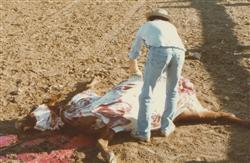
What is that disease? How do I find out?
Learn
the steps involved in examining sick or dead animals, and how to
collect symptomatic information or tissue samples that will aid in
making a diagnosis. The course will help you to recognise a disease and
determine an appropriate course of action to initiate in order to obtain
a diagnosis.